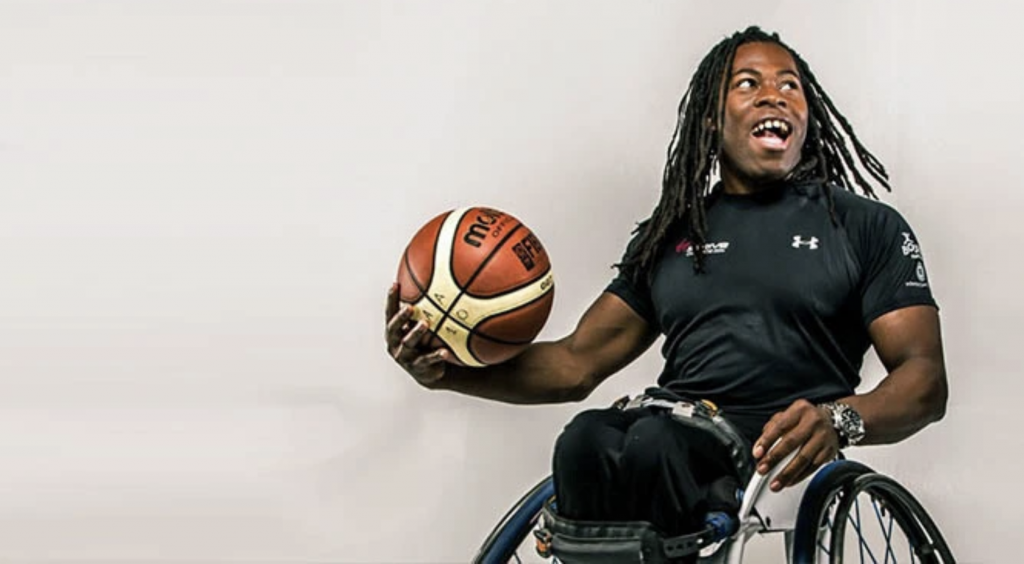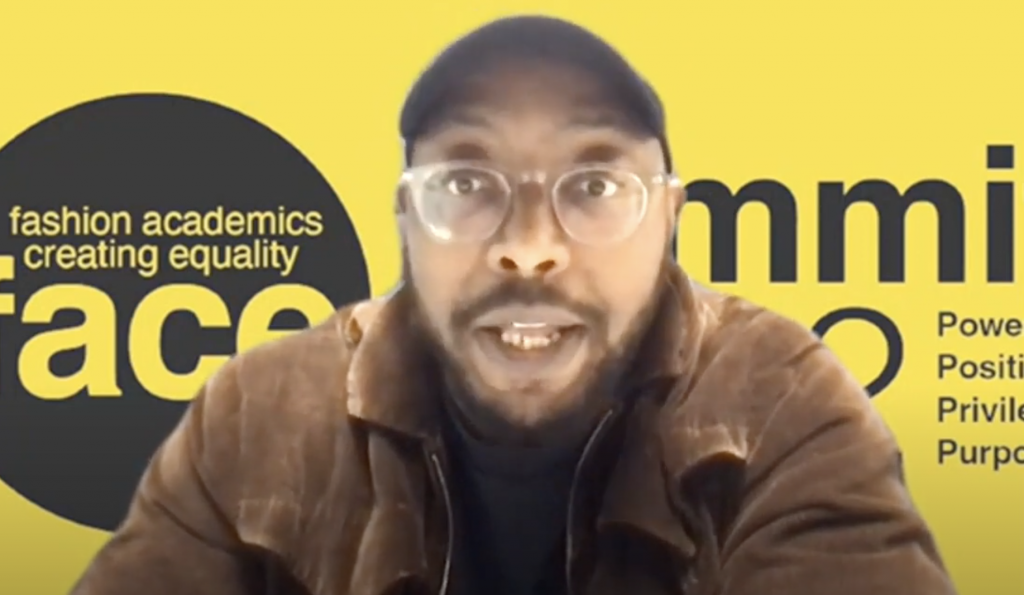Workshop 1-2
The nuances that make up an individuals positionality wether in a percieved minoroity culture or not are very important when exploring inclusivity, especially when the ultamate goal is promoting equality & empathy. We were given three short films with three people with disabilities speaking about thier intersectionality and positioning.

- The short films were extremely insightful, when considering the constraints and obstacles a person with a disability encounters as, one tends to focus in on the ‘identified’ or obvious, disability. Inadvertently, paying less attention to their unique intersectionality, ethnicity, social position, gender identity. All these elements consequently determine how an individual is treated in their environment and is catalyst in how we can make our environments more inclusive.
- In all three films, the recurring themes are ‘Accessibility’, ‘Community’, Visibility’
Ade Adepitan is a successful Paralympian and television presenter.
In his interview he was asked in view of modern movements such as Black Lives Matter (BLM) how do you feel the Paralympic movement can show that injustice and discrimination is not and will not be tolerated.
- He referred to George Floyd and the rise of BLM as an important crossroad in humanity. Comparing the Paralympic movement in terms of their identified struggle.
- He acknowledges that Paralympics is an enabling platform providing people the opportunity to ‘shine’ and elevate their ambitions in life.
- He states that, it is not one’s disability that disables them, but it is the society that creates a ‘systemic discrimination’ which disables them, i.e. inaccessible transport & buildings.
- If you are not exposed to examples of diverse disability in your community, you’re less aware of them which further impacts the disabled person’s confidence and they’re less likely to ‘shine’, reach goals and their potential.
- Ade states that the BAME community, particularly the black community, have faced oppression for hundreds of years and not been afforded the privilege to ‘shine’ or reach their potential because of the in-built systemic racism within the structure of society.
- Ade says that he intersects both disability and race, so he see’s discrimination from both angles.
- Ade is not confident to advise a child who shares his intersectionality or positioning that their race or disability in their quest to have a successful comfortable life does not matter.
- It’s taken both Paralympics and BLM decades to make society more aware of these injustices bringing them to the forefront of education and general conversation, but there’s still a lot of work to be done.
These points resonate with Christine & Chad’s short films when they relay on the injustices, they face navigating life with disability. I personally relate to Ade’s intersectionality of race & disability.

- I was recently diagnosed with dyslexia which led to a process of working with the disability team at UAL to gain support through access to work.
- This led to critical reflection on my own intersectionality and positioning in this context.
- As a black hetrosexual cis male from London my experience as an academic is that I’m often in the minority if not the only member of my team that identifies with my particular intersectionality / positioning.
- This historically has occasionally made me feel like an ‘imposter’ within my team when delivering seminars & workshops to students.
- Over the past 4 years I’ve made a profound effort to seek out dialogue and find a community of diverse academics that share (or have similar) intersectionality nationally.
- I’m a founding member of FACE, Fashion Academics Creating Equality.
- www.weareface.uk
- Being in dialogue with a community like FACE has enabled me to embrace my intersectionality as a catalyst for change within the sector.
- I’ve gained confidence through shared knowledge.
- I’ve had the privilege of witnessing a cultural shift nationally, an appetite for change and understanding post George Floyd.
- In my teaching practice I’ve had a student in my Year 2 cohort who’s from a minority culture with severe neurological challenges, she had a UAL Individual Support Agreement from the UAL disability team.
- Because of my recent neurodiversity diagnosis and empathy for her unique intersectionality I try to make myself available for one-to-one catch ups for extra support.
- Together with UAL Disability Advisor we’ve recently secured a Study assistant to support her while on campus in workshops and seminars.
- Going forward I will look into Student Union Student Cultural groups she may be able to attend try and gain a stronger sense of community. I’ve also introduced her and my students to FACE.
Bibliography
ParalympicsGB (2020) Ade Adepitan gives amazing explanation of systemic racism. Available at: https://www.youtube.com/watch?app=desktop&v=KAsxndpgagU [Accessed 30 April 2024].
Press.Parapride (2023) Intersectionality in Focus: Empowering Voices during UK Disability History Month 2023. Available at: https://www.youtube.com/watch?v=_yID8_s5tjc [Accessed 30 April 2024].
Crenshaw, K. (1990) Mapping the Margins: Intersectionality, Identity Politics, and
Violence against Women of Color.
2 responses to “Blog Task 1, Disablity”
This is a really insightful blog. It’s clear that you have done a lot to personally reflect on your recent dyslexia diagnosis and your feelings of being an imposter in your teaching environment, noticing important differences between you and the rest of your teaching team in how you can identify with intersecting positions.
It’s great to learn more about how you are applying these intersectional experiences, particularly race and neurodiversity, to your teaching and advocacy for colleagues and students.
I would like to hear more about what you learned from getting support from UAL’s disability team yourself, and whether this helped you when you were advocating for adjustments for your student. Perhaps you could also share how this will inform your approach with your whole cohort in the future?
I was not aware of FACE before reading your blog and look forward to finding out more! In the blog you could share more about the membership and the aims of the group, like how you understand equality in fashion and how you are working together as fashion academics to take action.
Your blog also encouraged me to consider including a positioning statement about my own experience with neurodiversity and UAL’s disability team, as this was an important and helpful context in your blog. Thank you.
I thoroughly enjoyed reading this Nick, and it felt like the format you used suited you well. Summarising, finding patterns and connections, and using bullet points to help structure your thoughts. As a fellow Dyslexic, it helped me read your work, and process your analysis.
It was great to see your own articulation of how your intersecting identities and needs relate to your role at UAL. And it feels like this recent understanding and acknowledgement of your dyslexia has given you another new lens in which to understand yourself.
There is so much in your comments at the end that I wanted to explore, the ‘imposter’ comment for example is so emotional and loaded. Feels like there are doors opening to another 1000 blog blogs in this one blog post.
You said yourself, you have made a profound effort to seek out dialogue and find community. This work you have done, and are doing is vital. And it sounds like you have deep care and sensitivity towards understanding your students and this is demonstrated through your work with the student you describe at the end. This is really wonderful to hear, and I wish everyone that worked in education had this care for, and understanding of, their role.
Thanks Nick! X